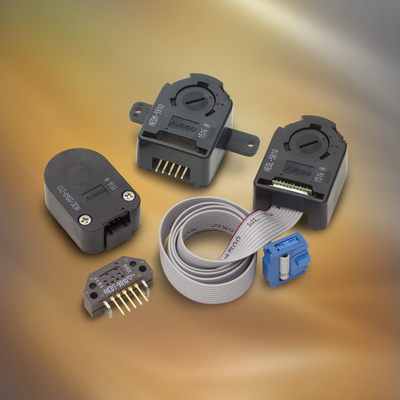Every successive generation of a design should be an improvement over the one(s) that preceded it. A new feature, better performance, smaller, lighter, lower power, tastes great, less filling, it’s red! With technically engineered electronic and electromechanical systems, this means always pushing the envelope when it comes to speed, precision, less heat, and less vibration. Advancements on all fronts count, and often this depends on the state of the art as regards to manufacturability.
But increased resolution with decreased space doesn’t happen often enough with electromechanical systems. Some approaches run into brick walls at some point and either need a rethink, or, a new technology to push them over the wall. This is true with shaft encoders.
Incremental shaft encoders can provide a very reliable and low-cost solution to machines that incorporate rotating shafts. Mechanically coupled internal electro-optics simply provide a pulse and some degree of rotation depending on the resolution. The resolution is measured as counts (or pulses) per revolution. Dual outputs provide half steps to double a resolution, and can be in quadrature form to provide the advantage of reporting on direction.
New and clever designs demand more robust devices, and while legacy devices like Avago’s HEDS-914x family serves well for many designs, modern 3-D printers, drones, robots, and toys now require higher resolution, tougher parts, multi-axis support, and new features.
That’s why the introduction of the new AEDT-981x family is so noteworthy (Figure 1). The new series of high-resolution (up to 5,000 counts per revolution) optical incremental encoders feature built-in interpolation. This internal step provides higher external accuracy without processor bandwidth. Autonomous counters can capture instantaneous position, angular displacement, rotation speed, acceleration/deceleration, and impulse loading by simply letting the controlling micro perform gated reads of this position counter register.
 Figure 1: Rugged and compact industrial multi-channel shaft encoders feature internal interpolation to provide higher resolutions up to 5,000 counts per revolution. (Source: Avago Technologies)
Figure 1: Rugged and compact industrial multi-channel shaft encoders feature internal interpolation to provide higher resolutions up to 5,000 counts per revolution. (Source: Avago Technologies)
What is really exciting is the multi-axis support. Three channel parts let a compact assembly like a small robot have all axis feedback situated in one location (if mechanically possible). Easy shaft coupling and mount tabs help electromechanical designers secure these bearing-less parts with very little mechanical slop (spatial play tolerance is 0.4 mm).
These small parts use a tiny 11 mm code-wheel, allowing the compact industrially rated (-40 to +115 degree C) encoders to take up only 26.67 x 20.8 x 10.16 mm volumetrically. And these parts are not power hogs. The low-current supply of 20 ma typically will keep these parts reporting reliably, even in the presence of up to 4 kV of ESD.
According to Avago, this represents 70 percent reduction in supply current compared to competitive solutions. As if all this wasn’t good enough, there’s more. Older designs can upgrade to the newer parts. The AEDT-981x is fully compatible with the company’s HEDS-914x legacy module series. No signal adjustments are needed. Multi-channel parts like the 3-channel AEDM-5xxx parts are also ready to meet your needs.
Peruse the Avago Motion Control Encoders site and you will find single-ended, differential, and even RS-422 compatible signal versions. A descriptive video is also a good place to start.
Advertisement
Learn more about Avago Technologies





